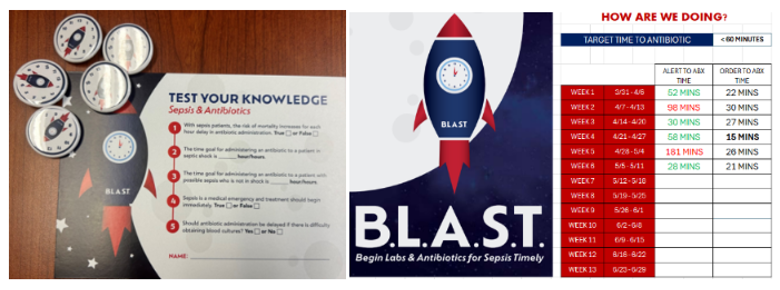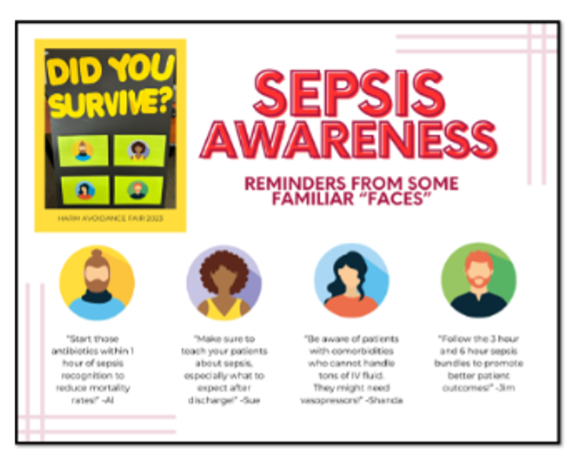Early identification and treatment are critical to preventing sepsis-related mortality in people with Medicare. Convergence Health Consulting (Convergence), a Centers for Medicare & Medicaid Services (CMS) Hospital Quality Improvement Contractor (HQIC), works with regional and state partners across 11 states to improve patient care and safety in hospitals through a variety of initiatives, which includes fighting sepsis.
In partnership with the Tennessee Hospital Association (THA), Convergence helped a large hospital in Tennessee achieve a 79.5 percent reduction (percentage change baseline to performance) in sepsis mortality between May 2023 and November 2023.
Interventions Identified to Decrease Sepsis Rates
To achieve this outcome, the hospital implemented the following interventions to reduce sepsis infection rates:
- Created an interdisciplinary sepsis workgroup to track sepsis data.
- Integrated a sepsis checklist in the facility’s electronic health record (EHR).
- Participated in a sepsis collaborative pilot project to enhance staff education and improve patient outcomes.
Integrating Teamwork to Track Sepsis Data
To track sepsis rates, the hospital focuses on interdisciplinary teamwork. They created a sepsis workgroup comprised of quality, nursing, education, physicians and informatics staff to complete a thorough review of sepsis data reports. The hospital’s sepsis data aggregation is run through Premiere, a comprehensive database of actionable data developed by Premier, Inc., that looks at observed and expected mortality rates.
Reviews of the hospital's data scorecard occur twice a month and guide action plans for sepsis practices. Frequently reviewing the scorecard allows the hospital to keep up to date with potential changes. Having informatics staff involved in the sepsis workgroup is crucial. Their ability to swiftly implement physician-recommended changes in the EHR can greatly enhance workflows and streamline processes.
The sepsis workgroup also reviews each sepsis case and investigates negative outcomes by talking with staff to correct errors in sepsis processes. The workgroup creates procedures that outline staff responsibilities and roles in sepsis patient care and shares this information with the hospital’s interdisciplinary committee which includes senior quality leaders, the CEO, and the chief medical officer. The CEO's consistent advocacy for sepsis improvement, coupled with the ongoing support of other senior leadership, is instrumental in propelling the hospital's success in sepsis care.
Integrating a Sepsis Checklist in the EHR
Having a sepsis checklist in the EHR helps staff identify sepsis cases quicker than using a paper tool. The electronic sepsis checklist creates an alert when a possible sepsis case arises. When an alert is generated, the EHR displays the patient's vital signs, required lab work and reasons for flagging the patient as potentially having sepsis. Additionally, it suggests necessary sepsis interventions. When the alert appears, the patient’s nurse is required to verbally inform a physician that there may be a sepsis case.
Piloting Sepsis Project for Improvement

The hospital is one of three in the state to pilot the THA version of B.L.A.S.T., Begin Labs & Antibiotics for Sepsis Timely initiative in their emergency department. It includes educational materials such as posters, Test Your Knowledge cards, lapel pins and weekly reports to raise awareness among staff about the initiative and tools for improving performance. Using B.L.A.S.T., the hospital has improved antibiotic administration timing.

To further reinforce the need for timely ordering of labs and antibiotics for patients suspected of sepsis, the hospital offered a storyboard-based simulation using four sepsis patient scenarios with various situational changes for staff to identify and act upon with the final storyboard indicating if the patient survived their sepsis. This was followed by a sepsis escape room format to further educate and instill knowledge related to sepsis. The goal is for staff to understand the impact of sepsis through a patient perspective. Additional goals include:
• Improve timely antibiotic administration
• Provide patient education
• Learn fluid resuscitation versus vasopressors
• Utilize the sepsis treatment bundles
• Advocate for people with Medicare
Keys to Success
Successfully improving sepsis rates can be replicated by taking the following steps:
- Develop an integrated sepsis workgroup to review sepsis data on an ongoing basis.
- Build a foundation with regional, state and local health care partners to share sepsis best practices and educational opportunities.
- Integrate sepsis workflows into the EHR to help hospital staff identify sepsis cases and provide quality care.
- Create innovative, engaging ways to provide sepsis education to hospital staff.
For more information, visit Convergence HQIC.
This material was prepared by The Bizzell Group (Bizzell), the Data Validation and Administrative (DVA) contractor, under contract with the Centers for Medicare & Medicaid Services (CMS), an agency of the U.S. Department of Health and Human Services (HHS). Views expressed in this material do not necessarily reflect the official views or policy of CMS or HHS, and any reference to a specific product or entity herein does not constitute endorsement of that product or entity by CMS or HHS. 12SOW/Bizzell/DVA-1374-05/21/24

